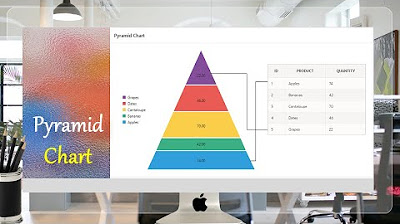What is A Hierarchical Organisational Structure
Summary
TLDRA hierarchical organization structure is characterized by a top-down distribution of authority and responsibility through multiple management layers, resembling a pyramid. Key features include a clear chain of command, division of labor, centralized decision-making, defined roles, and limited employee autonomy. Communication predominantly flows top-down. While this structure is common in large corporations and government, it may also lead to bureaucracy and slow innovation due to its rigidity.
Takeaways
- 🏢 A hierarchical organization structure is characterized by a top-down distribution of authority and responsibility through multiple levels of management.
- 🔗 It features a clear chain of command, ensuring that information and directives flow efficiently from the top down.
- 🛠 Division of labor is evident, with tasks grouped into departments focusing on specific areas of responsibility for streamlined operations.
- 📈 Centralized decision-making is a key aspect, with higher-level managers holding the power to make decisions affecting the entire organization.
- 📋 Clear roles and responsibilities are defined for each position within the hierarchy, promoting understanding and efficiency.
- 🚫 Limited employee autonomy is typical, with most decisions being made by higher-level managers, leading to a more structured work environment.
- 📢 Communication primarily flows top-down, with feedback and information from lower levels potentially being slower and filtered.
- 🏦 Hierarchical structures are common in large corporations, government organizations, and military establishments due to their clear framework for complex operations.
- 🚧 However, this structure can sometimes result in bureaucracy, slow decision-making, and reduced innovation due to its rigid nature.
Q & A
What is a hierarchical organization structure?
-A hierarchical organization structure is a type of organizational design where authority and responsibility are distributed in a top-down fashion through various levels of management, resembling a pyramid-like structure with multiple layers of management and supervision.
How does authority work in a hierarchical organization?
-In a hierarchical organization, each level of management has a defined scope of control and authority over the level beneath it, with higher levels having broader authority and overseeing the lower levels.
What is the purpose of a clear chain of command in a hierarchical structure?
-The clear chain of command ensures that information and directives flow from the top down and that there is a clear line of authority, with each level reporting to the level above.
How does the division of labor contribute to a hierarchical organization?
-The division of labor in a hierarchical organization involves grouping different functions and tasks into departments or units, each focusing on specific areas of responsibility, which helps to streamline operations and ensure specialized expertise.
Where is decision-making authority typically concentrated in a hierarchical structure?
-In a hierarchical organization, the authority to make decisions is concentrated at the top of the hierarchy, with higher-level managers having the power to make important decisions affecting the entire organization or their respective departments.
What does it mean to have clear roles and responsibilities in a hierarchical organization?
-Each position within the hierarchy has defined roles, responsibilities, and reporting relationships, which helps employees understand their roles and contributes to the efficient functioning of the organization.
How does limited employee autonomy affect the work environment in a hierarchical organization?
-Limited employee autonomy means that most decisions are made by higher-level managers, leading to a more structured and controlled work environment.
What is the typical communication flow in a hierarchical organization?
-Communication in a hierarchical organization primarily flows from the top down, with information and directives disseminated through various levels of management. Feedback and information from lower levels may flow upward but can be slower and subject to filtering.
In which types of organizations are hierarchical structures commonly found?
-Hierarchical organization structures are commonly found in large corporations, government organizations, and military establishments.
What are the potential drawbacks of a hierarchical organization structure?
-Potential drawbacks of a hierarchical organization structure include bureaucracy, slow decision-making, and reduced innovation due to the rigid hierarchical nature.
How does a hierarchical structure contribute to accountability within an organization?
-A hierarchical structure contributes to accountability by establishing clear lines of communication and decision-making, ensuring that responsibilities and authorities are well-defined and traceable.
Outlines

This section is available to paid users only. Please upgrade to access this part.
Upgrade NowMindmap

This section is available to paid users only. Please upgrade to access this part.
Upgrade NowKeywords

This section is available to paid users only. Please upgrade to access this part.
Upgrade NowHighlights

This section is available to paid users only. Please upgrade to access this part.
Upgrade NowTranscripts

This section is available to paid users only. Please upgrade to access this part.
Upgrade NowBrowse More Related Video
5.0 / 5 (0 votes)





